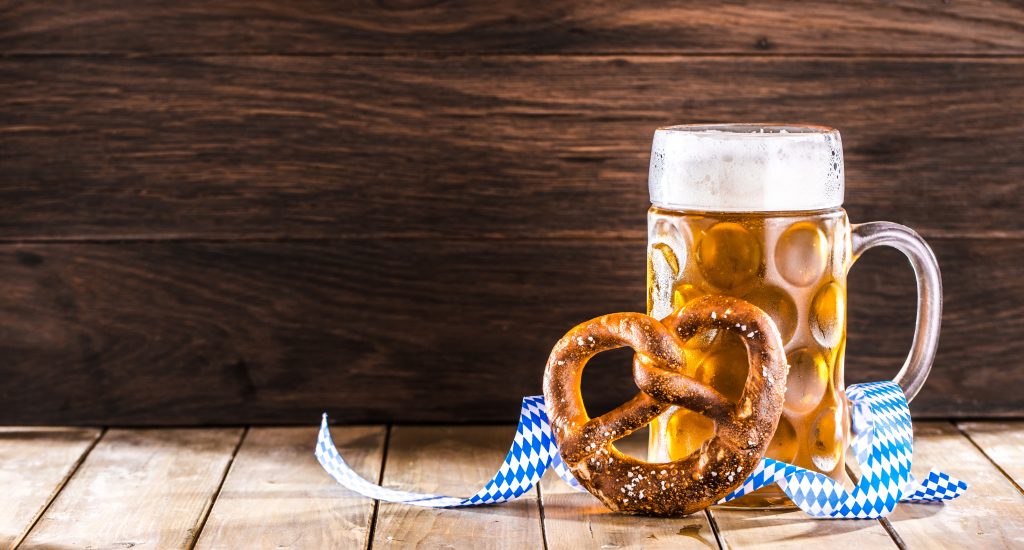
The cancellation of the 2020 Oktoberfest is another blow to a beleaguered beer industry that’s still reeling from the effects of the global health crisis. The world’s biggest beer festival was expected to bring in up to six million visitors to the city of Munich. Around the world, beer consumption during that time of year is normally high, as smaller scale Oktoberfest events take place everywhere. The popularity of Oktoberfest goes beyond all borders and normally the beer industry as a whole would benefit; but 2020 was a huge challenge for beer supply chain.
The total beer market this year has shrunk by about half, driven in part by the cancellation of festivals, concerts, live sports and other smaller events. France was forced to destroy 10 million liters of beer — the equivalent of four Olympic-sized swimming pools — due to the pandemic, as beer needs to be consumed fresh. Europe’s largest beer-producing nation, Germany, saw most of its 9,700 annual beer-related festivals canceled. Some manufacturers saw a complete devastation of their keg businesses. As a result, global beer consumption this year is expected to be 8.2 billion liters less than in 2019.
Opportunities for Growth
While there are big challenges on the horizon for the industry, companies and brands can still try to take advantage of emerging opportunities. There is now a renewed interest in local and trusted brands. Also gaining traction are low-alcohol/non-alcohol beers and craft beer. Craft beer in particular generated US$2.3 million in total sales throughout 2019, an almost 800% year-over-year increase.
Beer manufacturers that mainly relied on on-premise consumption are beginning to rethink their business models. A wider range of flavors is coming onto retail shelves, opening the door for new customers. To push their products further, companies are leaning into flavor promotion to educate consumers on the subtle nuances that make their products stand apart from the competition.
With supermarkets, discount stores and convenience stores becoming increasingly important distribution channels, manufacturers must learn to strike a balance between volume and price. Instead of large-sized packs of beer, consumers demand smaller packages that are easier to carry.
Consumers are also expecting more innovative packaging, which can add to production complexity. As such, manufacturers need to produce smaller batches with shorter production runs. Unfortunately, traditional manufacturing sites are typically unsuited to niche products and smaller packages as they are designed for the production of large volumes at low cost.
This is where an intelligent, integrated scheduling solution can come in. For example, bottlenecks on the production lines can be optimized by sequencing campaigns based on:
- Expected batch formulations
- Equipment cleaning and setup on changeovers
- Outbound logistics capabilities
Craft a Competitive Advantage
As manufacturers continue to innovate with new brands and flavors, the existing brand portfolio must be managed to control excess finished goods stock, raw material and container inventory. Therefore, the key to beer supply chain success will come from integrating innovation pipelines with Sales and Operations Planning (S&OP) software. S&OP draws on business data to help inform business decisions on:
- Product mix optimization
- Sales responsiveness
- Forecasting of supply, demand and costs
- Scenario planning
- Revenue management
In the long term, an integrated S&OP process will boost their corporate performance and profitability by balancing supply and demand. As such, potential changes to the product portfolio, sales promotions or beer recipes must also be in line with the established S&OP process.
A quick guide to meeting consumer demand
With integrated S&OP, manufacturers gain decision support to create a single demand plan that will help guide their business. This plan will consist of what the overall demand plan is and also how much the manufacturer can sell while considering their supply chain constraints.
The goal is to create a complete picture of the potential demand. By creating demand scenarios, manufacturers can explore a variety of options, test which ones improve the effectiveness of their S&OP processes and align them with their overall business goals.
This demand plan must be matched with a corresponding supply plan. Doing this accurately necessitates modeling the entire supply chain network with all its constraints — tank capacity, empty container requirements, raw material inventory and shelf life, as well as inter-company connections that include supply planning, critical materials and transportation. At this stage, manufacturers must determine the decisions necessary to meet the demand and corresponding business goals.
Despite the complexity, optimizing your beer supply chain with DELMIA can be easier than you think. To discover how you can meet the evolving requirements of consumers — regardless of disruptions — here.

